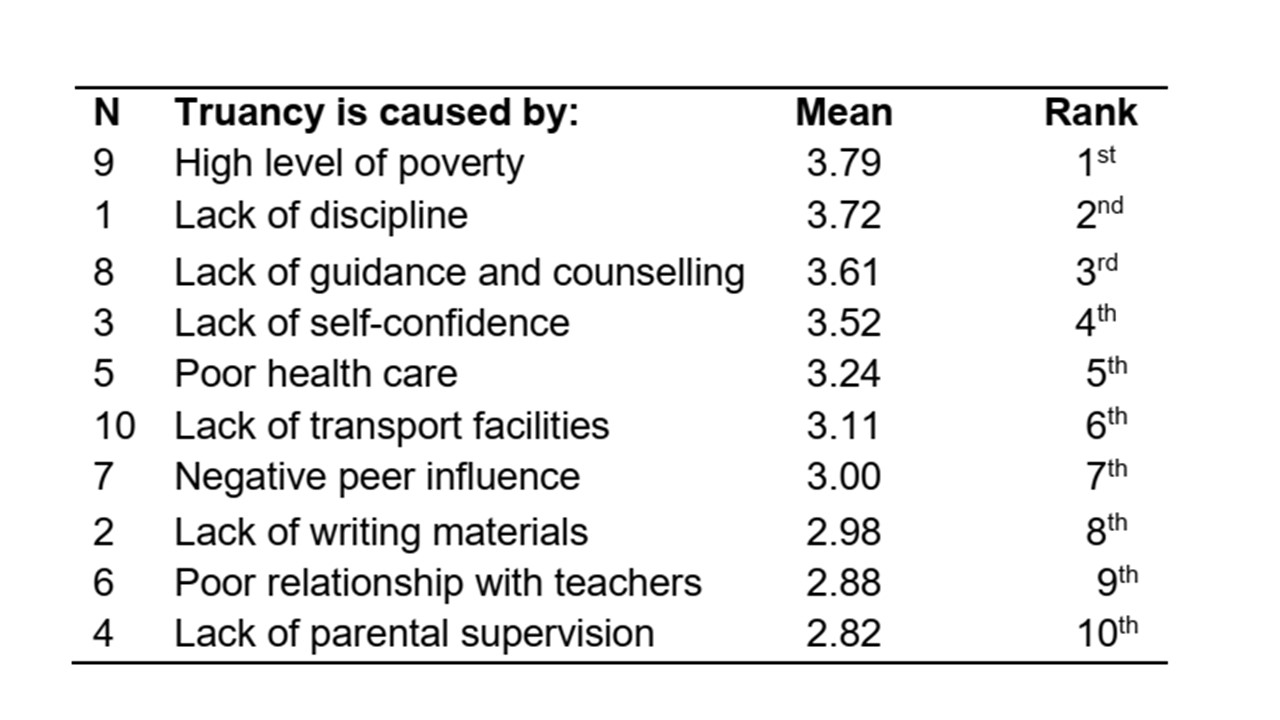Causes and Consequences of Truancy Among in School Adolescents in Oyo North Senatorial District Nigeria
DOI:
https://doi.org/10.12928/spekta.v3i1.5487Keywords:
Truancy, School authorities, Poverty, counsellingAbstract
Background: The need to increase the mastery of Information and Computer Technology (ICT) in teaching and learning activities is essential and urgent, especially during the COVID-19 pandemic. The PowerPoint application is a popular application for creating learning content, but most teachers are only at the level of "powerpointers". SMK Negeri Windusari, as a vocational high school, requires an increase in the level of its educators, namely those who can increase learning outcomes, one of which is by developing multimedia content based on PowerPoint. This training was in collaboration with UNIMMA Informatics Engineering. It was attended by twenty-four teachers starting with a pre-test and ending with a post-test to measure the level of success.
Contribution: Improving the quality of content to support learning outcomes.
Method: The training on the use of ICT for learning begins with observation through a pre-test and ends with a presentation of the training results, and then measures progress using a post-test.
Results: The results of the training showed that most of the participants showed improvement.
Conclusion: This training is expected to be sustainable as a form of support for improving the quality of learning content.
References
C.O. Chukwuka,” Truancy among Secondary School Students in Ebonyi South Education Zone”. Retrieved on 15th February, 2022 from http://www.doublegist.com /truancy-secondary-school-studentsebonyi-south-education-zone/ 2013
H. Malcolm, V. Wilson, J. Davidson &S, Kirk, ”Absence from school: A study of its causes and effects in seven LEAs”. Research Report No. 424: Queen’s Printer, 2003
R.A. Animasahun,”Acritical analysis of effects of truancy and cultism on the future aspiration of Nigerian Students a serious threat to parents’ expectation”. A paper delivered at the second valedictory service of Aipate Baptist Church Grammar School, Iwo, Nigeria, 2007.
G. Jarrett, “Deans and Truants: Race and realism in African American literature”. Philadelphia: University of Pennsylvania, 2007.
F.S. Akinwumi,”Training manpower factors and students’ academic performance in economics in Ibadan South West Local Government Area, Oyo State, Nigeria”. Journal of Clinical Counselling Psychology, vol9, no.1, pp 109-121, 2003.
L. Ma’aruf, “Truancy among secondary school students in Kano City: Causes and remedies”. Unpublished P.G.D.E. Project, Federal College of Education, Kano, 2005.
R.E. Ubogu, “The causes of absenteeism and dropout among secondary school students in Delta Central Senatorial District of Delta State”. Unpublished Ph.D Thesis. Delta State University, Abraka 2004
J. Goldstein, S. Little, & A Akin-Little, “Absenteeism: A review of the literature and school psychology’s role”. The California School Psychologist, vol. 8, pp 127–139, 2003.
S. Siziya, A.S. Muula, & E, Rudatsikira, “Prevalence and correlates of truancy among adolescents in Swaziland; Findings from the global-school-based health survey". Journal of Child and Adolescent Psychiatry and Mental Health, vol.1 no.1, pp1-15, 2007.
B. Whitney, “The Truth About Truancy”. London: Kogan, 2006
G. Attwood, & P. Croll,”Truancy in secondary school pupils: Prevalence, trajectories and pupil perspectives”. Research Papers in Education, vol. 77, no.21, pp 467–484, 2006.
K.L. Henry, “Who's Skipping School: characteristics of truants in 8th and 10th grade”. The Journal of School Health, vol.77, no.3, pp 29-35, 2007.
B.J. Brillington, “Patterns of attendance and truancy”. Journal of Educational Psychology, vol. 73, no.4, pp104-116, 2008.
D.Huizinga, R. Loeber, T.P.Thornberry, L. & Cothern, (2000), “Co-occurrence of delinquency initial findings”. Washington, DC: U.S. Dept. of Justice, Office of Juvenile Justice, 2000.
F.D. Oluremi, “Truancy and academic performance of secondary school students in South-west Nigeria: Implications for Counselling”. International Journal for Cross- Disciplinary Subjects in Education vol.3, no.2, pp 1424-1428, 2013.
E .M. Garry, ”Truancy: First step to lifetime of problems. Official Bulletin of Juvenile Justice and Delinquency Prevention”. OJJDP: US Department of Justice,2001.
A. Stahl,”Petitioned status offense cases in juvenile courts, 2004. OJJDP Fact Sheet” 2, pp. 1–2, 2008.
S.T., Umar, S., Shehu, & A.A Dahuwa,” Investigation into to the causes of truancy among public senior secondary school students in Azare Metropolis of Bauchi State, Nigeria”. Journal of Research & Method in Education, vol.5, no.1, pp 40-45, 2015.
A.M. Gesinde, “Psycho-social Determinants of Truant Behaviour among Secondary School Students”. Ife Psychologia: An International Journal, vol.13, no. 1, pp188-199, 2004.
T. Junger-Tas, Juvenile Delinquency in Europe and Beyond. London: Wiley, 2008
S. Gabb, “Truancy, its measurement and causation: A brief review of the literature”. London: Her Majesty’s Stationary Office, 2017.
T.M. Musa, “Absenteeism and Truancy on Academic Performance of Secondary School Students in Ogun State” Nigeria. Journal of Education and Practice, vol. 5, no. 22, pp 81-87, 2014.

Downloads
Published
How to Cite
Issue
Section
License
Copyright (c) 2022 Foluke Nike Bolu Steve, Rasaq Abimbola Fadipe , Olajide Charles Kayode

This work is licensed under a Creative Commons Attribution-ShareAlike 4.0 International License.
Authors who publish with SPEKTA (Jurnal Pengabdian Kepada Masyarakat: Teknologi dan Aplikasi) agree to the following terms:
- Authors retain copyright and grant the journal the right of first publication with the work simultaneously licensed under a Creative Commons Attribution License (CC BY-SA 4.0) that allows others to share the work with an acknowledgment of the work's authorship and initial publication in this journal.
- Authors are able to enter into separate, additional contractual arrangements for the non-exclusive distribution of the journal's published version of the work (e.g., post it to an institutional repository or publish it in a book), with an acknowledgment of its initial publication in this journal.
- Authors are permitted and encouraged to post their work online (e.g., in institutional repositories or on their website) prior to and during the submission process, as it can lead to productive exchanges, as well as earlier and greater citation of published work.

This work is licensed under a Creative Commons Attribution-ShareAlike 4.0 International License.












